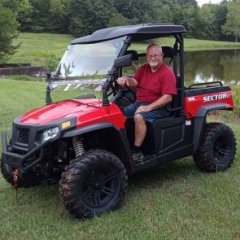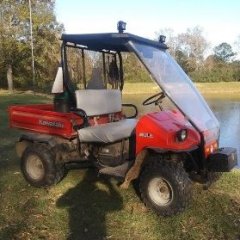-
Similar Topics
-
By darth vadner
I have a 2019 hi sun 750 I parked it in my garage last fall and about a month later I went to ride it and I had no power but the battery shows good. I’ve taken the ignition switch out and cleaned it. I cleaned the battery terminals and replace the main relay all my fuses are good. I still show strong battery but get no power, can anyone help or have any ideas? I have yet to find any wires chewed up like from a mouse or anything all the wiring looks good.
-
By Grizz
Hello I bought a axis 700 two years ago and have had no problems until the other day was going down dirt road and lost all electrical power except lights and starter engine will turn over but not start and display panel went out so can’t see any codes can anyone help I’m getting up in years and my knees are not what they use to be. Thanks
-
By Gorj
I am having an erratic issue. Sometimes the solenoid/relay does not activate when switching on the power. Thus the electric motor does not work. You can hear the solenoid activate because it is right under the seat in the middle. The solenoid/relay connects the batteries to the electric motor circuit. When it fails at making the connection I get a 54C3 code on the display.
-
By Travis
Many people have issues with the kawasaki FJ400 engine fouling out spark plugs, after working on a few FJ engines and 600 series Mule's with this issue, i can say the fix for this issue is using a slightly hotter spark plug... the factory recommends a BPR6ES NGK plug.... the Number in NGK plugs represents its heat range and somewhat odd, the lower the number the hotter the plug, at least as far as NGK is concerned. If you have a Mule fouling spark plugs try installing a NGK BPR4ES spark plug.
FROM NGK
A hotter heat range spark plug has an insulator design with a longer heat flow path to the metal shell of the plug. As a result, more heat stays in the ceramic firing end and less is dissipated to the engine. A colder heat range spark plug has an insulator design with a shorter heat flow path to the metal shell of the plug. As a result, less heat stays in the ceramic firing end and more is dissipated to the engine. For a spark plug to function properly, it must have a tip temperature high enough to burn off carbon deposits (self-cleaning) and avoid fouling, while remaining low enough to avoid overheating the ceramic firing end and pre-ignition.
-








Recommended Posts
Join the conversation
You can post now and register later. If you have an account, sign in now to post with your account.
Note: Your post will require moderator approval before it will be visible.